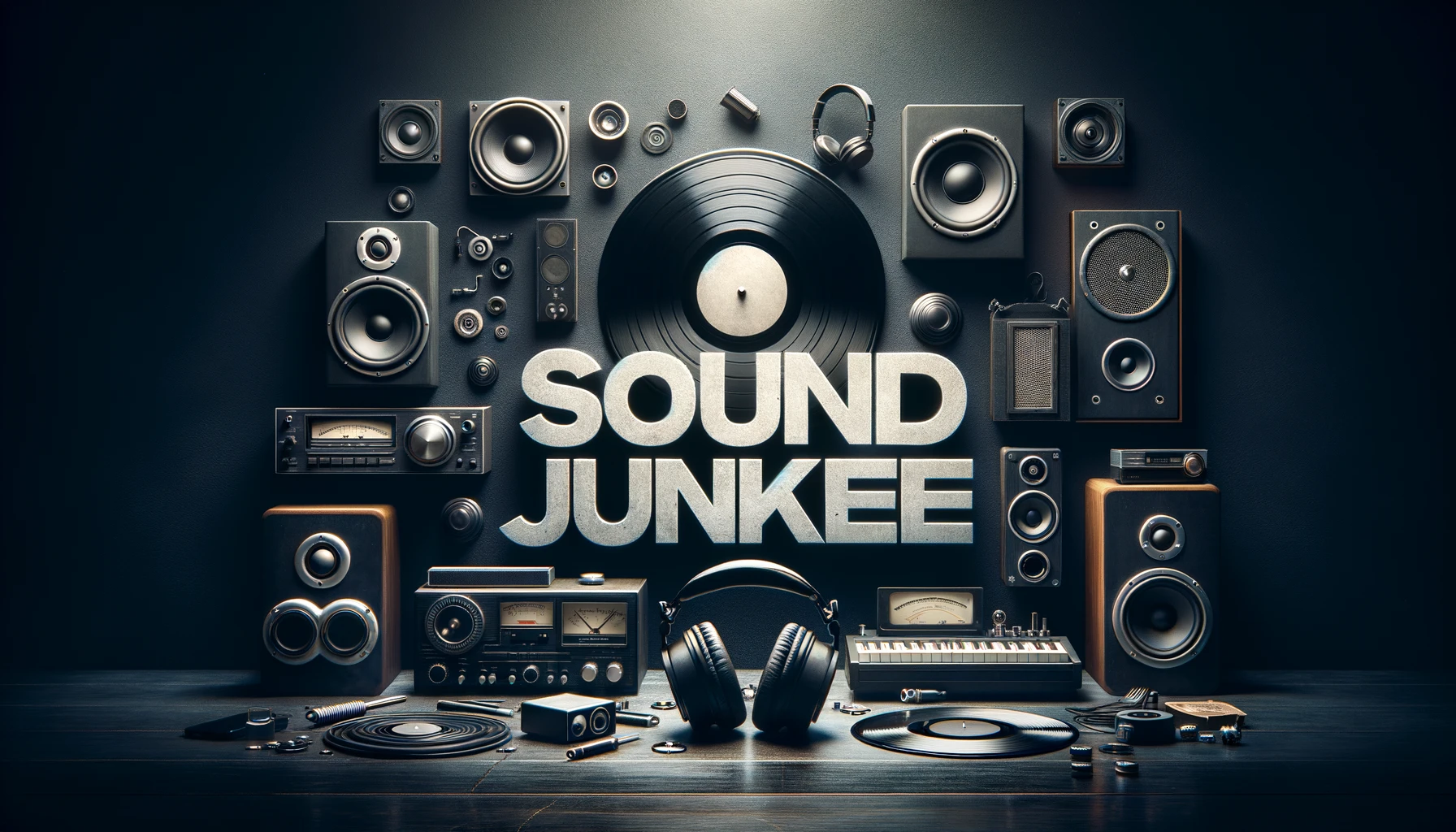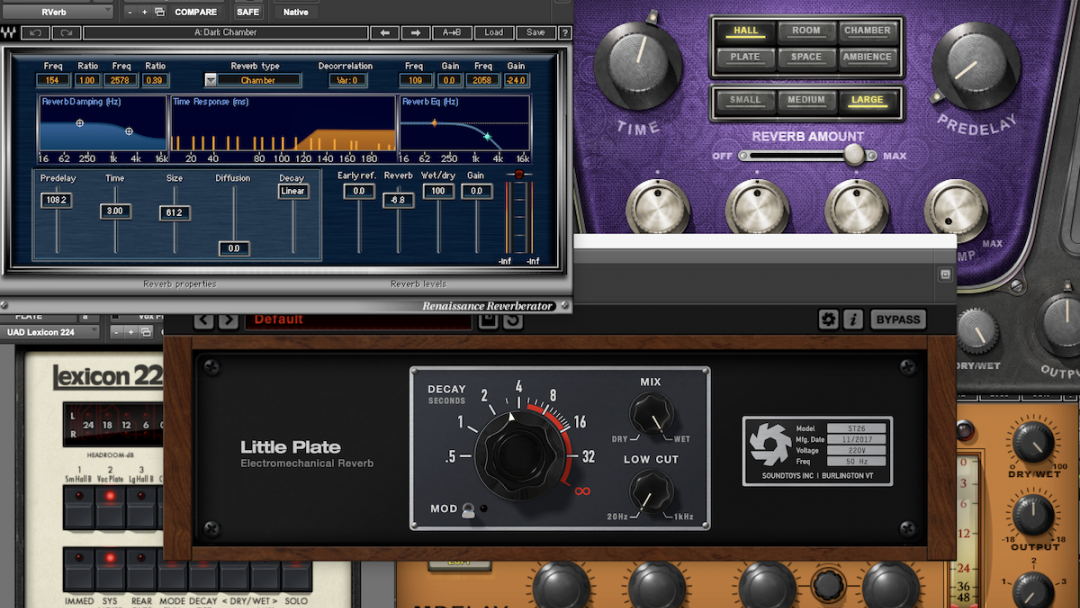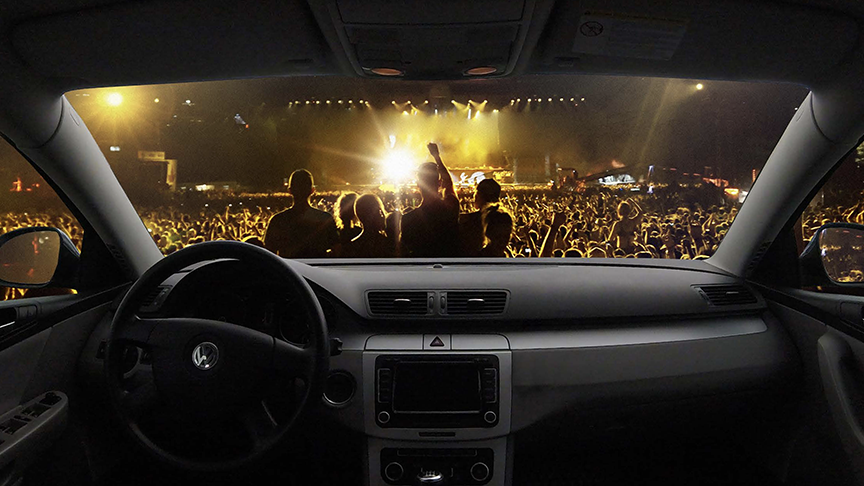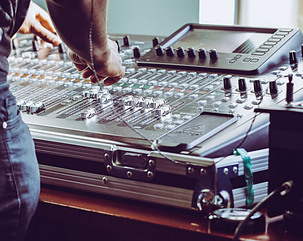Reverb or Delay? When is the best time to use either in your mix? Reverb and delay are fundamental effects in both music production and sound design. They shape how we perceive space and time in audio, and knowing when and how to use them can transform a mix from ordinary to extraordinary. Let’s dive into what these effects are, when to use them, and the various types available.
Table of Contents
What is Reverb?
Reverb is the persistence of sound after the original sound is produced. It occurs naturally when sound waves reflect off surfaces in a space, creating a sense of space and depth. Using reverb in a mix can add depth, warmth, and a natural ambiance, making elements blend together cohesively.
Another type of reverb you can choose is convolution reverb. Convolution reverb is a process that uses an audio sample of a real acoustic space, known as an impulse response (IR), to create a highly realistic simulation of that space’s reverb characteristics. By applying this IR to your audio, convolution reverb can accurately replicate the ambiance and reflections of places such as concert halls, churches, or even unique environments like caves or small rooms. This technique is widely used in professional audio production for its ability to produce authentic and natural-sounding reverbs.
What is Delay?
Delay records an input signal and plays it back after a set period of time, creating an echo effect. Delay can enhance rhythmic interest and add texture without cluttering the mix. In upbeat pop tracks, using delay on a lead guitar can create rhythmic patterns and ensure the instrument stands out. In electronic music, delay on synth leads adds movement and complexity, making the sound more engaging.
If you’re looking for an excellent guide on the different types of delay and how to use them effectively, check out the video “5 Delay Tricks – Ableton Audio Effect Tutorial” which provides practical tips and techniques for enhancing your mixes with delay effects. This tutorial is a great resource for learning creative ways to use delay in your music production.
Reverb v Delay: When to Use One or the Other
Understanding when to use reverb or delay, and how to combine them, is crucial for any producer or sound designer. Here are some scenarios to guide you:
Using Reverb for Vocals
Adding reverb to vocals in a ballad can make them sound smooth and immersive, adding emotional depth to the performance. The natural decay of reverb helps blend the vocals with the instrumentation, creating a cohesive sound. Plate reverb, created using a metal plate, is often used on vocals and snare drums to add brightness and sustain without sounding too distant. The UAD EMT 140 is a popular plugin for achieving this effect.
“Reverb is like adding another instrument to your mix,” says legendary producer Brian Eno, known for his work with U2 and David Bowie. This highlights the transformative power of reverb in enhancing a mix.
Reverb on Drums
Reverb on drums, especially snare and toms, can create a sense of space and depth, making the drums sound larger and more powerful. Hall reverb, which simulates the sound of a large concert hall, is typically used to create this expansive effect. The ValhallaRoom plugin is renowned for its quality and versatility in creating hall reverb.
If you’re looking for an insightful breakdown of using reverb on drums, check out the video “How to Use Reverb on Drums” by Sonic Scoop. This tutorial covers essential techniques for applying reverb to live drums, helping you achieve a balanced and professional sound.
Reverb in Ambient Music
In ambient music, reverb can generate lush, expansive soundscapes that envelop the listener. Chamber reverb, which simulates the sound of a reverb chamber, is commonly used to create these immersive environments. The Altiverb plugin offers excellent chamber reverb emulations.
For those looking to add unique, otherworldly reverb effects, the Eventide Blackhole is a fantastic choice, capable of creating massive, ethereal spaces perfect for ambient music and sound design.
Reverb for Orchestral Instruments
Reverb is also essential for orchestral instruments, simulating the acoustics of a concert hall and enhancing realism and depth. Hall reverb is typically used to achieve this effect, making the instruments sound like they are in a grand performance space. The FabFilter Pro-R is a versatile option for achieving a natural sound with intuitive controls.
Reverb in Sound Design
In sound design, reverb can convincingly simulate the vast, echoing environment of large spaces like halls or tunnels. For underwater scenes, reverb can create the muffled, distant sound characteristic of such settings. Reverb can also add a ghostly, spacious quality to haunted house ambiances, enhancing the eerie atmosphere.
Spring reverb, which uses a spring to create reverberations, is often found in guitar amplifiers and is commonly used for guitars in genres like surf rock. The Softube Spring Reverb is a great option for this type of reverb.
For a fascinating look at how Phil Collins revolutionized drum sounds in the 1980s with his unique use of gated reverb, check out the video “Phil Collins Explains How He Got ‘That’ Drum Sound.” In this video, Phil Collins himself breaks down the creative process behind one of the most iconic drum sounds in music history.
Using Delay in Music Production and Sound Design
Delay on Vocals
A short slapback delay can make lead vocals in pop or rock tracks sound punchier and more upfront without drowning them in the mix. This effect adds presence and clarity, making the vocals stand out. The Waves J37 Tape plugin is great for slapback delay effects.
“Delay is a fantastic way to add depth and dimension without losing clarity,” says producer Steve Lillywhite, known for his work with U2 and The Rolling Stones. This emphasizes the utility of delay in modern mixing.
Other vocal effects you can use include pitch correction, delay, and harmonization. Pitch correction, often achieved with tools like Auto-Tune, ensures that the vocals stay in key by adjusting the pitch of each note. Delay adds an echo effect, creating a sense of space and depth by repeating the vocal signal at set intervals. Harmonization layers additional vocal parts in harmony with the original, enriching the sound and adding complexity. These effects can transform a vocal track, adding professionalism and creativity to your recordings.
Delay on Guitar Solos
Delay on guitar solos adds repeated echoes, creating a fuller, more complex sound. It can enhance sustain, add rhythmic interest, and make the solo stand out in the mix. Tape delay, which uses analog tape to create delay effects with a warm, slightly degraded sound, is perfect for vintage vibes in genres like dub and classic rock. The UAD EP-34 Tape Echo is a popular tape delay plugin.
Delay on Synth Leads
Using delay on synth leads can add rhythmic elements and movement, making them more engaging and dynamic. Ping-pong delay, which alternates the delayed signal between left and right channels, can create a wide, spatial effect. The Soundtoys EchoBoy plugin excels at creating ping-pong delay.
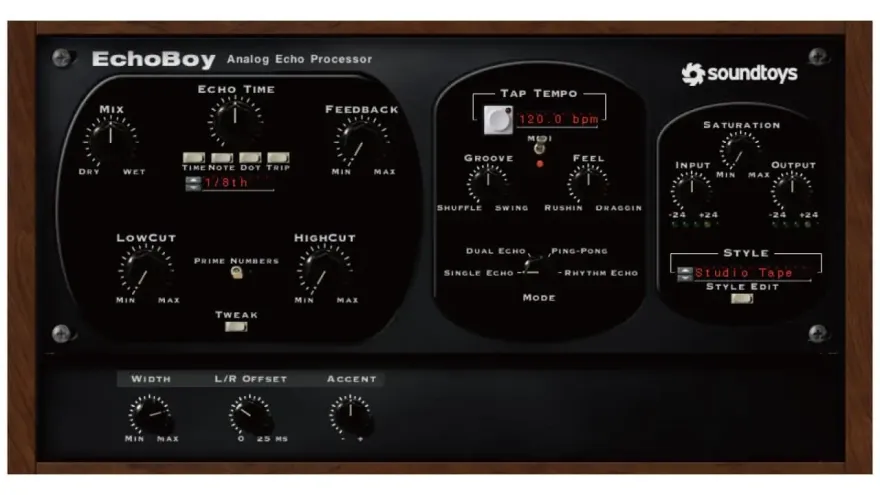
Delay on Percussion
Delay can also create interesting rhythmic patterns with percussive elements, adding complexity without the wash of reverb. Digital delay provides clean, precise echoes with digital accuracy, versatile for any instrument or vocal, and often used in modern pop, EDM, and rock. The TC Electronic D-Two is a reliable digital delay unit.
Delay in Sound Design
In sound design, delay can produce intricate, repeating patterns that add a futuristic feel to sci-fi effects. For footsteps in empty hallways, delay mimics natural echoes, adding a sense of space without overwhelming reverb. Delay can also create rhythmic drops in cave water drip effects, while reverb simulates the cavernous space.
“Combining delay and reverb can give you a very lush, expansive sound,” says producer Sylvia Massy, known for her work with Tool and System of a Down. “It’s about finding the right balance.”
If you want to learn more about sound design, it’s essential to start with the basics of audio theory, including waveforms, frequency, and amplitude. Understanding these fundamentals will give you a solid foundation for exploring more complex topics like synthesis, sampling, and effects processing. Practical experience is crucial, so experiment with different software and hardware tools, and try recreating sounds you hear in music and media. Online courses, tutorials, and forums can also provide valuable insights and techniques from experienced sound designers. Consistent practice and a curious mindset will help you develop your unique sound design skills.
Combining Reverb and Delay
In some scenarios, using both reverb and delay can produce exceptional results. For example, on guitar solos, starting with delay to add rhythmic echoes, then adding reverb to create a sense of space, can make the solo fuller and more complex. But which goes first in the chain: reverb or delay? The order should be Delay -> Reverb.
For ambient pads, using delay to create cascading effects followed by reverb to smooth them out and add depth creates a lush, expansive soundscape. The order should be Delay -> Reverb. On vocals in ballads, a subtle delay enhances presence, while a light reverb blends it naturally into the mix. Reverb or delay first? The order should be Delay -> Reverb.
In sound design, using delay first to create unsettling echoes followed by reverb to add a ghostly quality can enhance the eerie atmosphere of a haunted house ambiance. In urban street scenes, starting with delay to simulate echoes off buildings and then adding reverb to blend all ambient sounds creates a cohesive environment. For cave water drips, delay can create rhythmic drops, while reverb simulates the cavernous space.
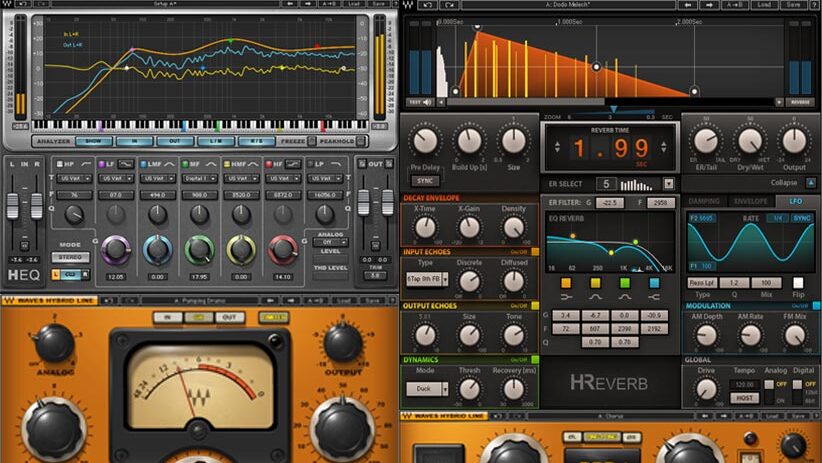
Types of Reverb or Delay
Different types of reverb and delay can be used to achieve various effects:
Hall Reverb simulates the sound of a large concert hall and is ideal for orchestral music and grand piano. Plate Reverb, created using a metal plate, is great for vocals and drums, especially snare drums, adding a bright and smooth reverb. Room Reverb simulates the acoustics of a smaller, more intimate room and is suitable for adding a subtle, natural ambiance to any instrument. Spring Reverb uses a spring to create reverberations and is often found in guitar amplifiers, commonly used for guitars in genres like surf rock. Chamber Reverb simulates the sound of a reverb chamber, adding a classic, rich reverb to vocals, drums, and other instruments.
For a versatile digital reverb experience, the FabFilter Pro-R offers a natural sound with intuitive controls, making it a go-to for many producers. The Waves H-Reverb is another powerful tool, providing a wide range of customizable reverb spaces.
Slapback Delay is a single, short delay that creates a quick echo, adding presence and depth to vocals and guitars. Ping-Pong Delay alternates the delayed signal between left and right channels, creating a wide, spatial effect perfect for synths and vocals. Tape Delay uses analog tape to create delay effects with a warm, slightly degraded sound, perfect for vintage vibes. Digital Delay provides clean, precise echoes with digital accuracy, versatile for any instrument or vocal. Modulated Delay adds modulation like chorus or flanger to the delayed signal, creating lush, swirling effects on synths, guitars, and pads.
For a unique delay experience, the Soundtoys PrimalTap emulates the classic Lexicon Prime Time hardware delay, known for its modulation and freeze effects. The PSP 85 is also a great choice for creating complex rhythmic patterns and lush, modulated delays.
Understanding the nuances of these effects and how to apply the best reverb or delay in different scenarios will elevate your music production and sound design, making your projects more dynamic and professional.
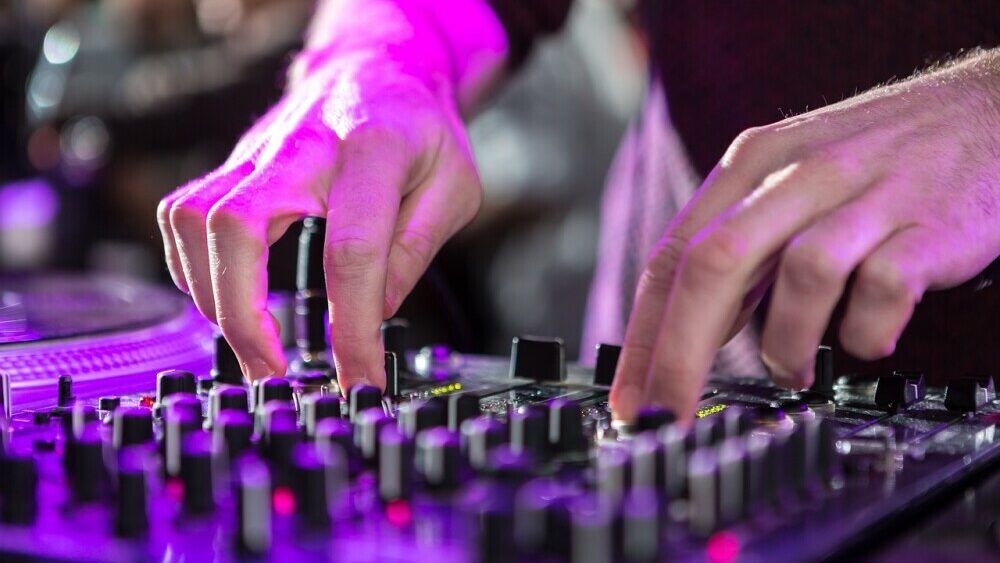
In a Nutshell
Reverb and delay are essential tools for adding depth, space, and texture to audio. By understanding when and how to use reverb or delay, you can transform your mixes and sound designs. Experiment with different types of reverb and delay, and don’t be afraid to combine them for unique effects. For further exploration, consider plugins like ValhallaRoom and ValhallaDelay, renowned for their quality and versatility, along with the popular plugins mentioned above.
